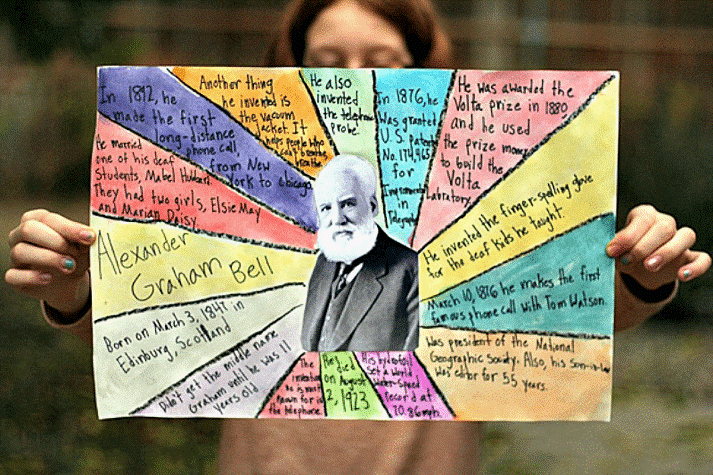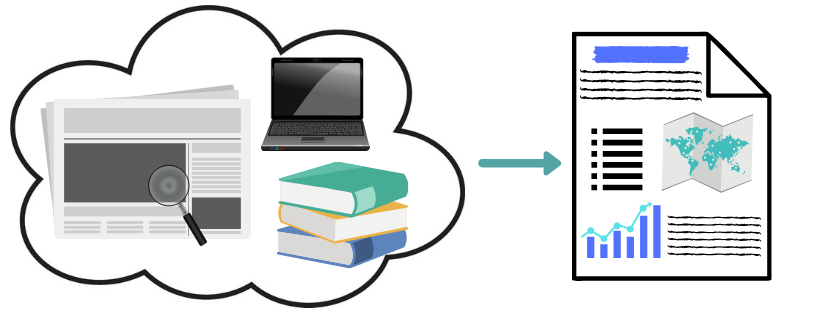We’re going to go out on a limb and say that most of you are not in love with your states’ standards of learning. But, whether you like them or not, there they are, waiting for you in your lesson plans every day.
So, let’s work to embrace the fact that state standards have brought some important skills into our collective focus. Groups of educators are talking about building better vocabularies, children from near and far are reading or listening to high-quality, texts, and students are being asked to actually have an opinion about things and share it with others.
While some of these things might be new to your instruction, the skills they develop will be useful to your students long after they’ve left the bricks and mortar of your buildings.
Thing #1 on the list of things that are new (or that you might be avoiding 😉) could be research projects. You may have asked: How can I do a research project with students who are not yet proficient readers and writers? Or, what does a "research project" look and sound like in the elementary grades?
Don’t let this cause you anxiety! The first point to remember here is that a research project done with elementary students is going to be a “shared” at first – one that you will do with them. As time goes on, you can release the responsibility back to your students.
In the short term, your job is to show them where to find information in print and online. You’ll model how to read charts, tables, and graphs; examine pictures, illustrations and infographics; how to navigate websites and other digital resources; and how to use key words to search online information efficiently.
Stop – we should talk about this last item for a moment. If you have ever searched for anything with one of the big three search engines in front of your students, you know the potential for something crazy showing up is pretty high – even if you use a seemingly innocent search term…trust us on this one. So, check out a few kid-safe options to use with them and that they can use on their own.
Sweet Search is a search engine that searches only the sites that have been reviewed and approved by a team of librarians, teachers, and research experts. Their SweetSearch2Day section offers 2Day’s History and Biographies plus research kill guides and other fun stuff.
KidRex is a kid-safe search engine powered by Google custom search. It uses a combination of Google's safe search mode and their own database of filtered keywords, phrases, and websites. They also host KidzSearch which has great image and video options and an easy interface.
Famhoo is another option for kid friendly searches. Famhoo draws on the collective results of the major search mainstream search engines like Google, AOL, and Yahoo. Famhoo simply provides a stricter family filter than the filters available on mainstream search engines.
Now that you’ve gathered the information, how can your students show what you know? The good news here is that formats for research projects are almost endless. Think charts, diagrams, concept webs, info-graphics, flap books, flash cards, timelines, comic-strips, videos or podcasts, presentations, speeches, and so on. (Now it really sounds like fun, doesn’t it?) Below is a great image from Let’s Explore that showcases exactly what we’re talking about.

Okay, so now you know where to find information and how you might possibly share what you and your students have uncovered. The final piece is the WHAT. What do you research? Well, there’s more good news here – almost anything that your grade-level expectations call for, that you’ve read a bit about in a book or experienced on a field trip, or that interests your students is fair game for a research project.
Remember, these can be done as a group or in smaller groups, pairs, or individually depending on the age of your students.
Suppose you’ve read a folktale from a far-off country and your students want to know more about its country of origin – research it! Students can use atlases, images, watch videos about the area in general or pick a particular category like foods, traditions, or historical facts that embrace the region.
Assign students the task of interviewing family members to find out about significant family events of the last 50 or so years. Encourage them to contact as many relatives as possible, of different ages, to get the most varied perspective. Then, have students create timelines (digital or physical) of their important family events – encouraging them to include short descriptions of each event and images where possible.
Have students choose a topic that is of interest to them or relevant to your current science or social studies curriculum. Explain that their job is to do research using books, videos, pictures, and online resources to determine 6-9 important facts about the topic. Once they’ve evaluated and narrowed down the information, they can create a series of digital flash cards that relay the information concisely.
We could go on and on!
Aren’t you just a little bit excited about this? Of course you are. Now get out there and pass that excitement on to your students and start imagining the possibilities. Be calm and research on.
_0.png)




